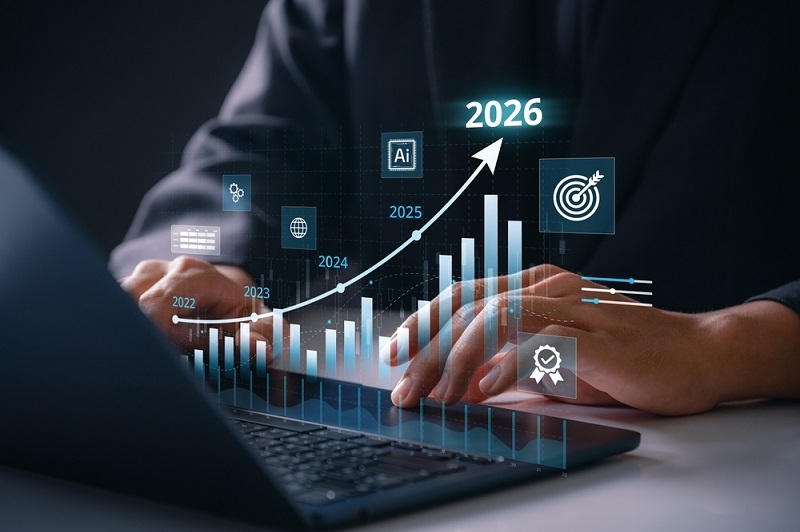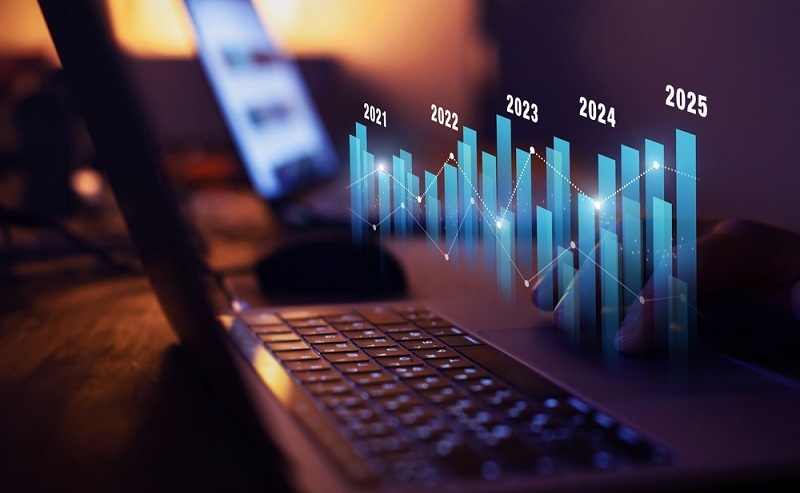What is Trend Forecasting & Why Businesses Must Value It?

Trend forecasting is a method of predicting future preferences of customers. It is like reading clues about the upcoming time. However, this is not a process of guessing things; it is about paying attention. When people change the way they dress, shop, or spend time, those small changes often grow into bigger patterns. Forecasting the trend helps you find those patterns before anyone else sees them.
In this blog, you will learn what is trend forecasting and why it is essential for brands to achieve growth and stability.
What Is Trend Forecasting?
Trend forecasting is simply predicting what people might like or prefer in the future. It's based on how people live and what they are drawn to. People's interests shift a little every year — what they wear, watch, or buy. Forecasters notice these small shifts and connect the dots.
It is not completely based on numbers or charts, but it also depends on your ability to watch and understand the small changes around the world. You need to understand the culture and habits of your target audience in order to predict the future trends.
For example, fashion trend forecasting experts closely monitor how style and material keep on changing every year. This helps them to make a proper plan for the future and not just do what is already trending.
Trend forecasting can also help in design, marketing, and even technology. When forecasters see what’s rising in one area, it often spreads to others. That’s how a small idea can grow into a global trend.
How Does Trend Forecasting Work?

Trend forecasting doesn’t happen overnight. It’s a slow and careful process that mixes observation, research, and data. The idea is to take everything people are doing now and look at what might come next. Here’s how it usually works:
Identifying Past Trends
The first step is to look back. Forecasters study what people liked before, what faded away, and what made a comeback. Many trends move in cycles. For example, a style from ten years ago may return with minor changes. Looking at the past helps understand how trends move.
Observing Patterns and Shifts
Once the forecasters understand the past trends, they start looking for signals in the customer behavior. These signs can be identified via social media, movies, or even fashion. This process of understanding the pattern is all about noticing the similar changes. These slight hints can play a massive role in changing trends.
Analyzing Consumer Behavior
Forecasters study how people behave — what they post online, what they search for, or what they buy. This behavior tells stories. It is not about judgment; it is about understanding why people choose what they do.
Creating Forecasting Models
After gathering data, forecasters use simple models to track how trends spread. Some trends grow slowly and last long. Others rise fast and disappear. Models help in predicting how far and how quickly an idea may travel.
Testing and Adjusting
Predictions are never going to be entirely perfect. After some time, forecasters compare what they expected with what really happened. If something didn’t match, they adjust their method. The idea is to keep improving and learning from what works and what doesn’t.
Types of Trend Forecasting
There are two main types of trend forecasting. Both are useful, but they focus on different timelines.
1. Short-Term Forecasting
This kind looks at what’s coming soon — the next few months or next season. It’s often used in fashion trend forecasting because styles change fast. It helps designers decide what kind of clothes or colors will fit the upcoming mood.
2. Long-Term Forecasting
Long-term forecasting looks further ahead. It studies larger shifts, like how technology, culture, or environment might change how people live and think over several years. This type is more about direction than detail.
Short-term forecasting helps with immediate plans, while long-term forecasting helps shape future strategies. Both are connected because short-term shifts often grow out of long-term changes.
How To Become a Trend Forecaster
If you are thinking that guesswork and luck are enough to become a trend forecaster, then you are absolutely wrong.
This is because you need to be observant and curious to understand the small things that people usually overlook.
You can check the following list to understand the skills that a good trend forecaster needs:
Learn to Observe Social Changes
It is essential for the best forecasters to notice even the most minor details. They observe changes in how people interact, dress, etc. Observation is the most essential skill that you must have for forecasting trends.
Build Research and Analytical Skills
Forecasters collect information from many sources — reports, surveys, social media, and conversations. They use that information to see patterns. This part takes patience and focus. It’s about connecting facts with real human behavior.
Develop Creativity and Vision
Numbers can only tell part of the story. Creativity helps people to imagine how they might respond to new ideas. A forecaster uses imagination to see where the trend could go next. It's part art, part research.
Over time, a trend forecaster learns to trust both instinct and evidence. It’s a mix that grows stronger with experience.
Factors That Influence Trend Forecasting
You will notice that trends constantly keep changing, and there are various factors behind this. Therefore, the following list includes all the reasons that can influence trend forecasting:
Cultural and Social Shifts
Lifestyles can change quickly, and so can choices. This is the reason customer preferences have a huge impact in shaping trends.
Technological Advancements
With the tech world developing rapidly, it is developing new habits among people. Therefore, everything people see and hear about on the social media platforms can impact the market trends massively.
Environmental Awareness
More people care about sustainability. This change in thinking affects what they buy, wear, or support, especially in fashion trend forecasting.
Economic and Demographic Changes
Population and lifestyle changes affect how people spend, live, and plan their futures.
Global Connectivity
The internet helps people to connect with everyone because of which a small idea in one city can become a global trend in days.
Each factor adds a layer to how trends start and grow. A good forecaster looks at all of them together.
Must Read: 2025 Influencer Marketing: Trends & Strategies for Success
Conclusion
Trend forecasting is a process of anticipating the future behavior of customers by understanding the changes in their action. It may sound simple, but it requires you to connect with their thoughts and habits in order to actually understand their demands.
This content was created by AI
